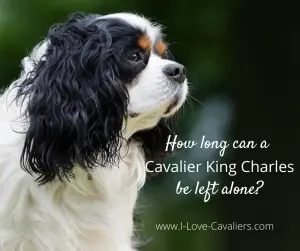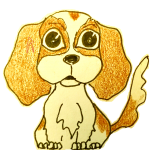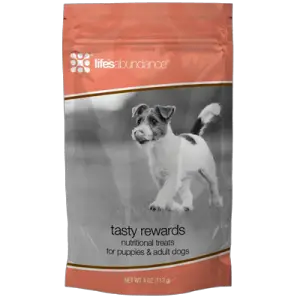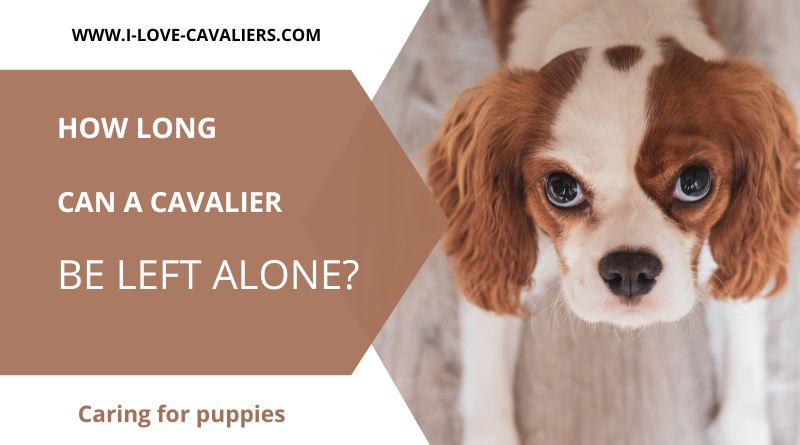Pet owners often wonder how long a Cavalier King Charles Spaniel can be left alone.
Though Cavalier King Charles Spaniels have a reputation as a breed that suffers from separation anxiety, following these simple procedures can help your puppy learn to tolerate being alone without distress or bad behavior.
Crate training is essential in helping your puppy become accustomed to being left alone. Your dog’s crate is his “home” – a place where he can relax without stress.
Place your pup in his kennel and leave the room. New puppies will whine and become anxious at first, so be prepared to return before they become overly distressed.
Gradually, however, you’ll be able to extend the time period for how long your Cavalier can be left alone. The process of socializing your new dog will take time but pays big dividends in raising a happy, well-adjusted companion.

The Cavalier Temperament
Cavalier Spaniels are very loving and friendly dogs, making them excellent pets for individuals and families. They are generally happy in the company of people as well as other animals.
Recognizing Signs of Separation Anxiety in Your Cavalier
Recognizing the signs of separation anxiety in your Cavalier is crucial. Unlike simple mischief or occasional accidents, these behaviors are consistent and often escalate when left alone. Key signs include:
Destructive Behavior: If you return to a home with chewed furniture or scratched doors, it’s not just mischief. Your Cavalier is showing you they’re stressed.
Excessive Noise: Notice if your dog barks or howls more when you’re not around. This is their way of expressing anxiety.
Pacing and Restlessness: If your dog paces or seems restless as you get ready to leave, they’re likely feeling anxious about your departure.
Escape Attempts: If your Cavalier tries to leave the house or yard when you’re gone, they’re not just exploring. They’re looking for you.
Physiological Signs: Excessive drooling or panting as you leave is a clear stress indicator.
Eating Changes: A Cavalier that doesn’t eat in your absence is showing a sign of anxiety.
Help Your Pet Feel Safe At Home
Crate training is the easiest way to help your new puppy feel at home. Dogs are by nature “den animals” and appreciate having a designated place where they feel secure.
Many dog breeders will send you home with a scrap of blanket or towel that smells like the puppy’s mother and litter mates. Placing it in your pet’s crate calms your new puppy with smells of home.
Manage Your Puppy’s Routine
Establishing a regular routine for feeding, exercise and play, potty time, and sleep is critical for a new puppy. The more consistent you are with your puppy’s activities, the sooner your new pet learns what to expect.
When your Cavalier gets used to his new routine, anxiety begins to disappear.
 Gradually Extend Time Alone
Gradually Extend Time Alone
Using a crate for potty training is the process of lengthening the time your pet can be out of his kennel without having an ‘accident.’ To avoid Cavalier King Charles Spaniel separation anxiety, you should reverse the process and extend the time your puppy can tolerate being alone in his crate without distress.
Initially, your Cavalier puppy will want to come out of his crate and be with you whenever he is awake.
After your puppy has enjoyed a little playtime (and has been given a chance to go potty), return him to his crate. Consider giving him a small treat. In the beginning, it’s important that your Cavalier can see you from his crate.
When you step out of sight, expect your puppy to whine and become agitated. Return to the room where your puppy can see you before he becomes overly distressed. Gradually step out of the room more often and for longer periods of time.
Your new pet will learn to tolerate being left alone in his safe, secure “home.”
Make sure your puppy has toys in his crate to distract him from any sense of isolation. Particularly when a sleeping puppy wakes up, he will more easily learn to spend time by himself if there is a chew toy in his kennel to attract his attention.
Come & Go Calmly
Your pet will take his cue from your behavior. Before leaving your pet alone, try to calm your puppy as you crate him.
Spend a few minutes in sight of his crate, but without giving your pet any direct attention. Then leave without saying goodbye.
If you are able to leave without attracting your pet’s attention, all the better!
Upon returning to the room where your Cavalier is crated, stay calm as you let your puppy out (to go outside to potty). As he gets a little older, you should actually resist the temptation to immediately talk to your pet upon returning.
Spend a moment in the room before giving him your direct attention. Teach your Cavalier that comings and goings are “normal” and don’t need to be accompanied by lots of excitement.
At What Age Can I Leave My Cavalier Alone?
As every animal is unique, it’s difficult to predict how long your Cavalier can be left alone without stress or at what age they’ll be able to tolerate your absence.
Ideally, pet owners should be committed to giving their Cavaliers plenty of time for the first few months of life and avoid leaving puppies alone for extended periods of time without arranging for a friend, neighbor, or pet sitter to check on them.
Watch carefully for signs. Cavalier King Charles Spaniel separation anxiety manifests in whining, howling, or even chewing or scratching himself.
Before extending how long our Cavalier can be left alone, ascertain it is not upsetting your pet. In the long run, it will take much longer to socialize with an animal who has become fearful and begun to experience separation anxiety.
Many pet owners eventually give their Cavaliers free run of the house, but it’s likely to be 12 to 18 months before you’ll want to leave your Cavalier loose on his own.
Even then, your pet may always appreciate having his crate as a place to call home.


Suggested articles:
